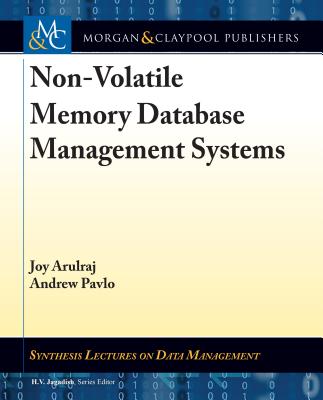A Primer on Memory Persistency
暫譯: 記憶體持久性入門
Gogte, Vaibhav, Kolli, Aasheesh, Wenisch, Thomas F.
- 出版商: Morgan & Claypool
- 出版日期: 2022-02-09
- 售價: $1,830
- 貴賓價: 9.5 折 $1,739
- 語言: 英文
- 頁數: 116
- 裝訂: Quality Paper - also called trade paper
- ISBN: 1636393047
- ISBN-13: 9781636393049
-
相關分類:
系統開發
海外代購書籍(需單獨結帳)
相關主題
商品描述
This book introduces readers to emerging persistent memory (PM) technologies that promise the performance of dynamic random-access memory (DRAM) with the durability of traditional storage media, such as hard disks and solid-state drives (SSDs). Persistent memories (PMs), such as Intel's Optane DC persistent memories, are commercially available today. Unlike traditional storage devices, PMs can be accessed over a byte-addressable load-store interface with access latency that is comparable to DRAM. Unfortunately, existing hardware and software systems are ill-equipped to fully avail the potential of these byte-addressable memory technologies as they have been designed to access traditional storage media over a block-based interface. Several mechanisms have been explored in the research literature over the past decade to design hardware and software systems that provide high-performance access to PMs.
Because PMs are durable, they can retain data across failures, such as power failures and program crashes. Upon a failure, recovery mechanisms may inspect PM data, reconstruct state and resume program execution. Correct recovery of data requires that operations to the PM are properly ordered during normal program execution. Memory persistency models define the order in which memory operations are performed at the PM. Much like memory consistency models, memory persistency models may be relaxed to improve application performance. Several proposals have emerged recently to design memory persistency models for hardware and software systems and for high-level programming languages. These proposals differ in several key aspects; they relax PM ordering constraints, introduce varying programmability burden, and introduce differing granularity of failure atomicity for PM operations.
This primer provides a detailed overview of the various classes of the memory persistency models, their implementations in hardware, programming languages and software systems proposed in the recent research literature, and the PM ordering techniques employed by modern processors.
商品描述(中文翻譯)
這本書向讀者介紹新興的持久性記憶體(PM)技術,這些技術承諾提供動態隨機存取記憶體(DRAM)的性能,並具備傳統儲存媒介(如硬碟和固態硬碟(SSD))的耐用性。持久性記憶體(PM),例如英特爾的 Optane DC 持久性記憶體,今天已經商業化可用。與傳統儲存設備不同,PM 可以通過可位址的位元組載入-儲存介面進行存取,其存取延遲與 DRAM 相當。不幸的是,現有的硬體和軟體系統並未充分利用這些可位址的記憶體技術的潛力,因為它們是為了通過基於區塊的介面來存取傳統儲存媒介而設計的。在過去十年中,研究文獻中探討了幾種機制,以設計能夠提供高效能存取 PM 的硬體和軟體系統。
由於 PM 具備耐用性,它們能夠在故障(如電源故障和程式崩潰)中保留數據。在發生故障時,恢復機制可以檢查 PM 數據,重建狀態並恢復程式執行。正確的數據恢復要求在正常程式執行期間對 PM 的操作進行正確排序。記憶體持久性模型定義了在 PM 上執行記憶體操作的順序。與記憶體一致性模型類似,記憶體持久性模型可以放寬,以提高應用程式性能。最近出現了幾個提案,旨在為硬體和軟體系統以及高階程式語言設計記憶體持久性模型。這些提案在幾個關鍵方面有所不同;它們放寬了 PM 的排序約束,引入了不同的可程式化負擔,並引入了對 PM 操作的不同失敗原子性粒度。
這本入門書提供了各類記憶體持久性模型的詳細概述,涵蓋了最近研究文獻中提出的硬體、程式語言和軟體系統的實現,以及現代處理器所採用的 PM 排序技術。











